Biomass Industry
Technology Services and Solutions
From the food we eat to the waste we produce.
Did you know that 4.9% of total U.S. primary energy consumption comes from Biomass products? Of course you did, you work in the industry and are here to find out if we can help you with your IT problems.
We were just testing everyone else who came here to see what Biomass Energy is.
Oh and yes, we can, just in case you were still wondering if we could help.
Biomass — Renewable Energy From Plants & Animals
Whether your company produces ethanol from lignocellulosic biomass, jet fuel from palm oil or biodiesel from sugar beets, TenacIT wants to do its part to help make our world a better place. We don’t want your organization suffering from operational inefficiencies nor do we want you paying more for technology resources than is absolutely necessary. Wasting any of the precious resources you are generating is counter to the accelerated deployment that is urgently needed from the Biomass industry.
TenacIT will be the first to admit that we don’t have a silver bullet to making your operations 100% efficient, but what we will do is sit down with you and your team to discuss ways that technology can improve your operations for FREE.
If you need:
- SCADA and Engineering Solutions
- Back Office Technology Services
- Facility Instrumentation and PLC Services
- Advanced Reporting Services
- Feed Stock Inventory Solutions
- Or help with any other pain point
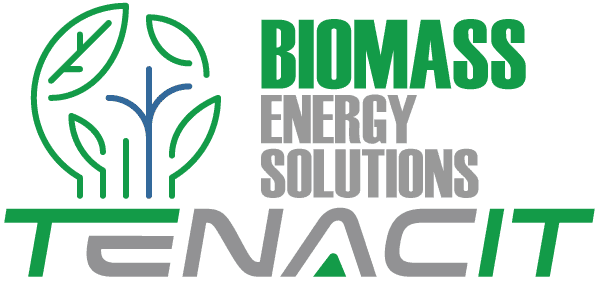
Biomass 101
The EIA states that “Biomass is renewable organic material that comes from plants and animals. Biomass was the largest source of total annual U.S. energy consumption until the mid-1800s. Biomass continues to be an important fuel in many countries, especially for cooking and heating in developing countries. The use of biomass fuels for transportation and for electricity generation is increasing in many developed countries as a means of avoiding carbon dioxide emissions from fossil fuel use. In 2020, biomass provided nearly 5 quadrillion British thermal units (Btu) and about 5% of total primary energy use in the United States.
Biomass contains stored chemical energy from the sun. Plants produce biomass through photosynthesis. Biomass can be burned directly for heat or converted to renewable liquid and gaseous fuels through various processes.”
Biomass sources for energy include:
- Wood and wood processing wastes—firewood, wood pellets, wood chips, saw mill sawdust and waste, as well as black liquor from pulp and paper mills
- Agricultural crops and waste materials—corn, soybeans, sugar cane, switch grass, woody plants, algae, and food processing residues
- Biogenic materials in municipal solid waste—paper, cotton, wool products, food, and yard/wood wastes
- Animal manure and human sewage
From Dirt to Jet Fuel
1
Marginal Fields
The establishment of crops dedicated for biomass raises huge concerns, as these crops detract from land that is required for food production, potentially undermining food security. Researchers and biomass companies today are looking for ways to move biomass crops onto “marginal lands” as they could supply biomass fuels without competing for land optimal for our food supply. While these marginal condition crops are capable of thriving in less than optimal locations, their biomass yield and quality do not ensure acceptable economic returns to farmers and cost-effective biomass conversion into bio-based products. The ongoing challenge (as with any crop) will be improving the quality and quantity of the produced product using technological advancements in farming and bio-engineering. The key however to all of this is utilizing locations that historically are not well suited for food crops.
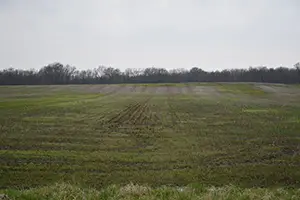
2
Biomass Cultivation
As any farmer or urban gardener can tell you, land cultivation (the act or process of preparing soil for the raising of crops) is a foundational step in the growing and eventual harvesting of any plant. In the evolution from dirt to jet fuel, land cultivation is probably the most critical as it determines in many ways the eventual yield of the crop. Poor soil…sub-optimal plants. Farmers, going back to the dawn of man, have utilized several techniques for preparing soil and all were considered technological improvements on previous generations.
- Soil Testing
- Crop Selection
- Fertilization
- Tilling
- Burning
- Double Digging
- Animals
- Terracing
- Crop Rotation
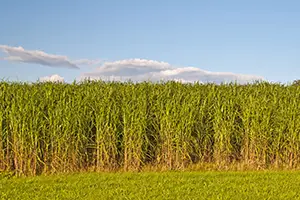
3
Biomass Harvesting
When people hear the word harvesting, they typically fall into one of three groups.
- Grandma out in the garden
- Farmer John bailing hay
- Super massive commercial farming operations
While these views are not necessarily incorrect, in the biomass world, they may look completely different than many people imagine. Harvesting corn and other traditional crops for use in biofuels can look very traditional. But collecting algae from mile long ponds is probably not near the top of the list if you are not in the industry. Nor would 18-wheelers loaded with saw dust from a furniture mill. All of these diverse sources of bio material can be used in the production of biomass products and therefore their collection can be considered “harvesting”.
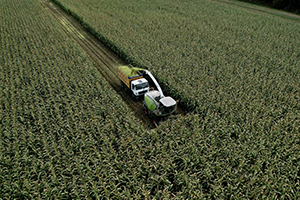
4
Biomass Bundling
After harvesting many biomass products such as switchgrass and sugarcane need to be bundled up prior to being transported to a refinery. While it may make common sense to perform this step, it ironically is not typical as many biomass feed stock sources can simply be loaded up and delivered to holding areas.
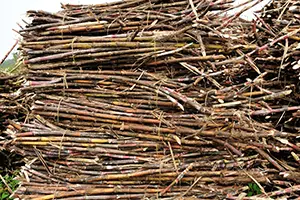
5
Feed Stock Transportation
While there may be a few biomass operations that have a direct connection to their feed stock (algae farms for instance) this is not the norm. Depending on the product there can be considerable costs in the delivery of feed stock to processing facilities. Whether it is transported via road, rail, ship or pipeline, the delivery of these feed stocks is critical to maintaining a running operations.
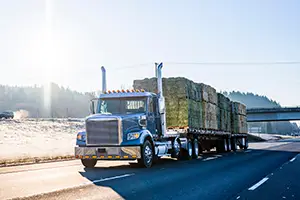
6
Biomass Preprocessing
While the ideal biomass operation would like to use 100% of the feed stock they receive, the truth is there can be bits of unusable material that needs to be removed before the product goes to the refinery. In the case of large feed stock such as trees, the original product itself needs to be debarked and chipped. Depending on the product, there may need to be considerable amounts of work to prepare the feed stock for pre-treatment.
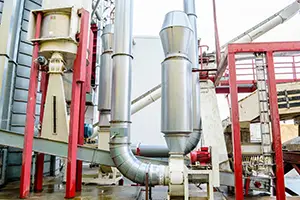
7
Physicochemical Pre-Treatment
Overcoming the resistance a plant cell wall has to deconstruction in lignocellulosic biomass, is a key step in the production of fuels and chemicals. The natural resistance is due to the highly crystalline structure of cellulose which is embedded in a matrix of polymers-lignin and hemicellulose. The main goal of pre-treatment is to overcome this recalcitrance, to separate the cellulose from the matrix polymers, and to make it more accessible for enzymatic hydrolysis. Pre-treatment of certain lignocellulosic biomass products can theoretically improve sugar yields to higher than 90% yield for biomass feed stock such as wood, grasses, and corn.

8
Bio-Refining
A biorefinery is a refinery that converts biomass to energy and chemicals. Biorefining can be defined as the sustainable processing of biomass into a spectrum of bio-based products (food, feed, chemicals, materials, biofuels, power and/or heat. As refineries, biorefineries can provide multiple chemicals by fractioning an initial raw material (biomass) into multiple intermediates (carbohydrates, proteins, triglycerides) that can be further converted into value-added products. Each subsequent refining phase is referred to as a “cascading phase”.
- Abrasives
- Cosmetics
- Food Additives
- Nutritional Supplements
- Fertilizers
- Bio Diesel
- Bio Jet Fuel
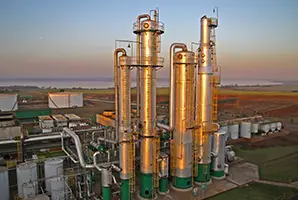
9
Bio-Fuel Distribution
So after land is purchased, cultivated, planted, tended to over time, harvested, bundled up, transported, processed, treated and refined it is ready for delivery via truck, rail car, ship or pipeline to gas stations or manufacturing plants around the world.
While many people are encouraged by the progress and possibilities that biomass products hold, few understand the complex process required to convert corn into gas station quality fuel.



